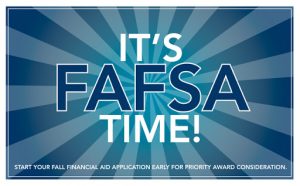Floundering in financial aid

Where are those financial aid awards? That’s a question we have been asking. The FAFSA Simplification has really thrown a wrench into the planning aspect of finding the college that your student can succeed and you can afford. The latest information from the Department of Education is that the schools should begin receiving student data the first part of March. Financial Aid Awards will most likely follow a few weeks later. There are a few of the changes in the calculations that may impact families.
One change is multiple siblings in college. In the past, this was taken into account in the calculations. It is no longer a factor. Unfortunately, this will have a profound effect on families. We are curious to see how adjustments are made from the financial aid offices.
Another change is for business owners and farmers. In the past family farms and businesses with less than 100 employees were not included as a parent asset. Unfortunately the form no longer allows for that exception.
For divorced or separated families, the form is no longer filled out by the custodial parent but the one provides the most financial support. This may have a devastating effect on families who may have previously qualified for financial aid.
If you haven’t been keeping up, many schools have pushed back the commitment deadline to give families time to evaluate the awards and make the best decision. As a reminder to our clients, be sure to keep sending us the admission letters and when you start receiving your financial aid awards send those to us. We will evaluate and go over an apples to apples comparison so you have a clear idea of how much college will cost.
We don’t have a crystal ball to see if FAFSA will improve next year, however we certainly hope they are smoother.


